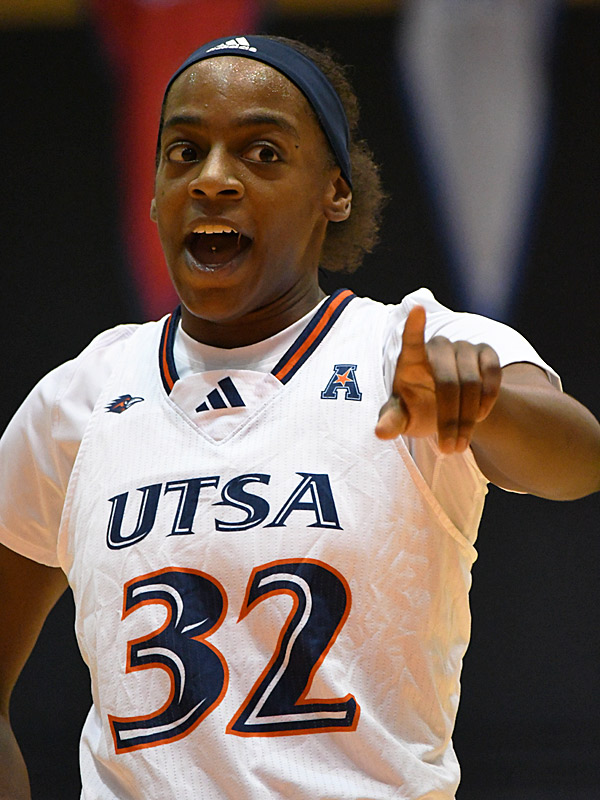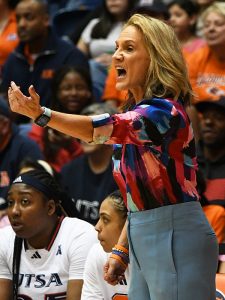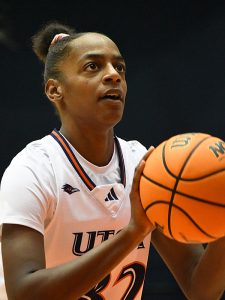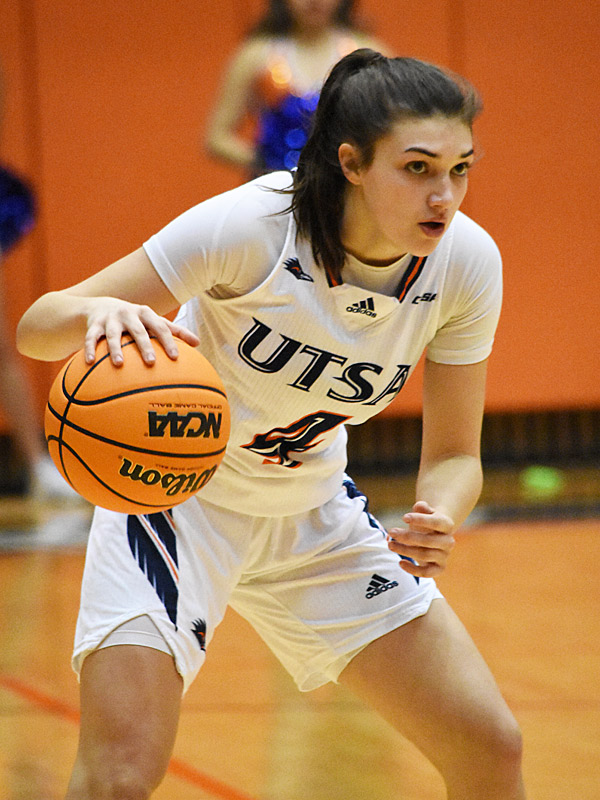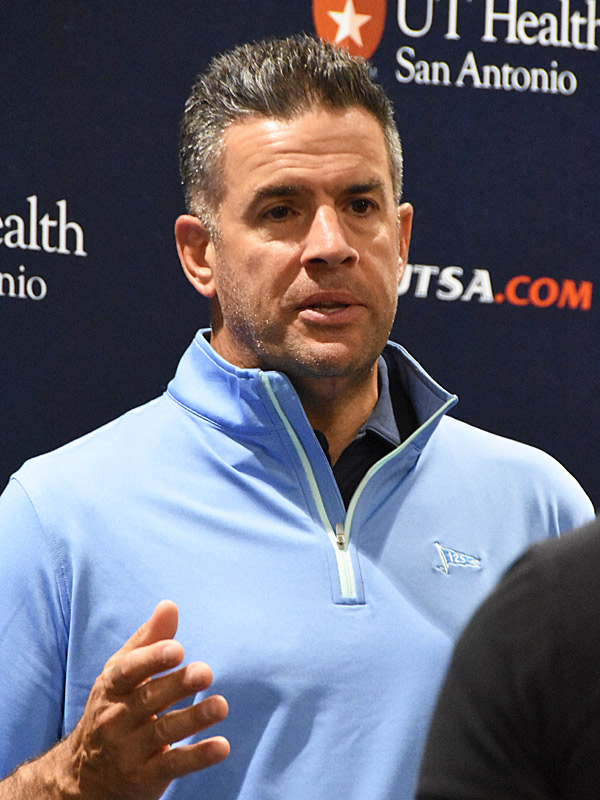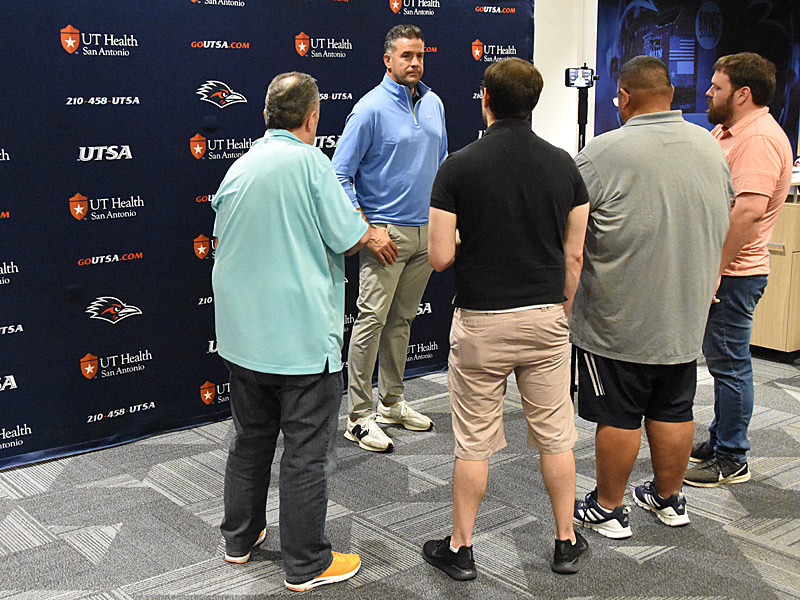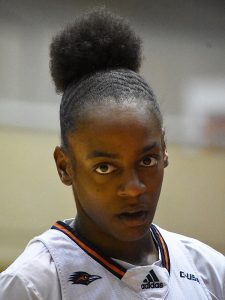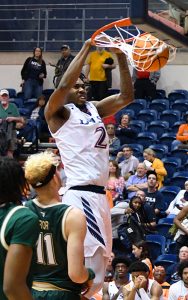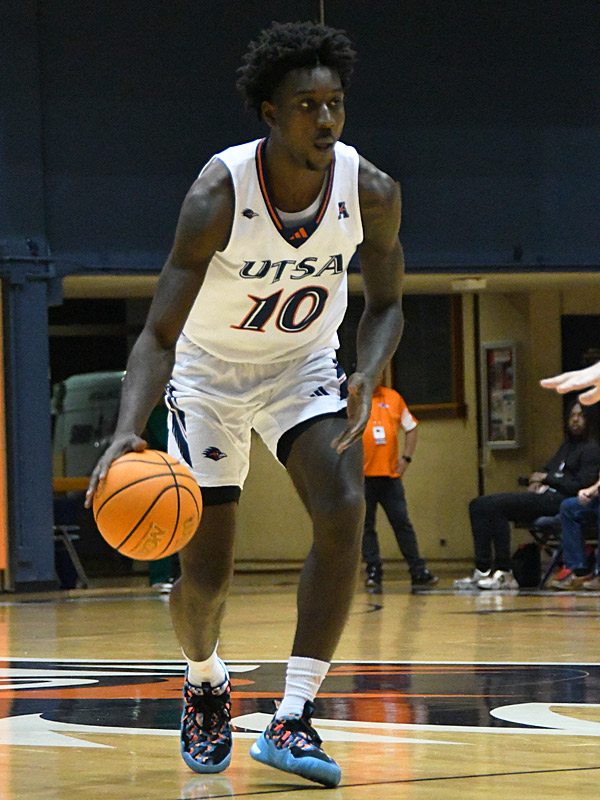
High-scoring forward Jordyn Jenkins returns to play for a UTSA team that hopes to improve on last year’s 18-15 finish. – File photo by Joe Alexander
By Jerry Briggs
Special for The JB Replay
The UTSA women’s basketball program is slowly starting to gain respect around the American Athletic Conference. This time last year, there wasn’t much buzz about the Roadrunners. This year, entering their second season in the AAC, they’re picked to finish fifth among 13 teams despite the loss of two key players, Elyssa Coleman and Kyra White.
Coleman has retired medically with knee problems, while White took the opportunity to turn pro.
In Coleman, a 6-foot-3 post, the Roadrunners had a steady scorer, rebounder and shot blocker. With White, a 5-9 guard who works now for a pro team in Ireland, they had a do-it-all backcourt performer who played defense, rebounded and also split time with Sidney Love in running the offense.
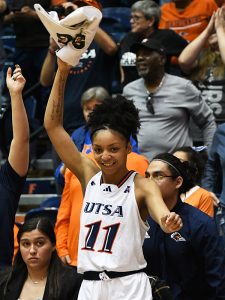
Junior guard Sidney Love averaged 9.6 points on 36.1 percent shooting from the field last season. – File photo by Joe Alexander
White ranked among AAC leaders with 34 minutes per game.
Even with those two stalwarts no longer on the team, the new-look Roadrunners that fans will see Wednesday night at Rowdy Jam could very well have more upside than the ones that finished 18-15 last season. By the time conference season rolls around in late December, they could be more dangerous than the group that finished 10-8 and took a No. 4 seed into last season’s AAC tournament.
More than a few offseason developments have allowed the Roadrunners to dream even bigger this season.
First, forward Jordyn Jenkins is working her way back into peak conditioning. Jenkins, who sat out the first 21 games last year rehabilitating a knee injury, is expected to be a stronger player than the one that averaged 17.1 points and 6.8 rebounds in 12 games at season’s end.
She’s had a full summer of conditioning to get stronger, which according to the plan, at least, should help her return to the level of play that allowed her to become the Conference USA Player of the Year in 2022-23. Recently, she was named as a preseason, first-team all-conference pick.
“I think for Jordyn, her focus just needs to be getting back physically,” UTSA coach Karen Aston said earlier this summer. “When I say physically, I’m talking about conditioning (and) being able to withstand night after night of high-minute games.”
In addition to an improved Jenkins, the Roadrunners’ returning players have stepped up their games, as well. This would include high usage players last season, such as Love, Aysia Proctor and Idara Udo, who all played more than 30 games and started 20 or more. Love had 32 starts and averaged 30 minutes. Among players who didn’t play heavy minutes last season, Siena Guttadauro has been playing extremely well in practice lately.
Giving UTSA even more firepower are six new players, notably, transfers Nina De Leon Negron and Nyayongah Gony. De Leon Negron is a 5-6 point guard who can run the offense, score and rebound. Gony, a long-armed, 6-4 forward with speed and jumping ability, has shown flashes of becoming an impact defender.
It wouldn’t be a major surprise, either, to see one or two of Aston’s four incoming freshmen push for playing time. With depth at all positions, a group highlighted by 6-foot-3 shooting guard Mia Hammonds from Steele is a luxury for Aston, who is entering her fourth season at UTSA.
“I think we have a lot of potential to be great,” Jenkins said Monday at the AAC media day. “We have so much talent. We’re all trying to fit into one team and one working offense. We have potential to start off strong and be undefeated (early in the season). It’s just about building our chemistry and keeping up the good work.”
Love said she thinks UTSA has “a very high ceiling,” adding, “We have a lot of versatility in lineups and different areas that we can be good at. So, I don’t know. I think this team has a lot of potential.”
Stepping in to fill the void left by Coleman, the UTSA program’s all-time shot block leader, Udo is a likely starter at center with Jenkins at power forward. Off the bench, Gony and returning forward Cheyenne Rowe should figure prominently into the mix in the frontcourt. Two freshman, Ross and freshman Emilia Dannebauer, will supply depth.
As for the minutes vacated by White, Aston is looking at using Love, De Leon Negron and Guttadauro either as point guards or shooting guards. Any one of the three, paired with Proctor, an explosive shooting guard, should give the Roadrunners a dynamic backcourt.
“I think what we have added is going to work in our favor,” Jenkins said.
The difference in UTSA from last year to this year may be in style. Last year, the Roadrunners sometimes got bogged down into slower-paced games, scoring in the 50s and 60s. Players have talked about an emphasis on playing faster to take advantage of the team’s speed.
“There’s a lot of good teams out there,” Love said. “Good teams look different. I feel like, last year, we had a good team. Kyra White, key players like her, of course they’re missed. But this year we have a chance to do something like make some noise in the American conference with the new additions to our team.
“Everybody adds,” Love said. “They don’t take away from the team. I think it’ll be interesting for the people to see.”
Notable
Rowdy Jam, marking the tip-off to the 2024-25 UTSA men’s and women’s basketball seasons, is set for Wednesday at the Convocation Center. Start time is 7 p.m., and admission is free.
The event will feature free pizza for UTSA students, an introduction to the players and coaches on the men’s and women’s basketball teams, and interactive games involving players and UTSA students in attendance.
The UTSA women play an exhibition on Nov. 1 at home against San Antonio’s St. Mary’s University, a Division II program. They’ll open the regular season on Nov. 7 at Texas A&M, a power-conference program from the Southeastern Conference. The Roadrunners will return home on Nov. 9 to face the UT Rio Grande Vaqueros.

